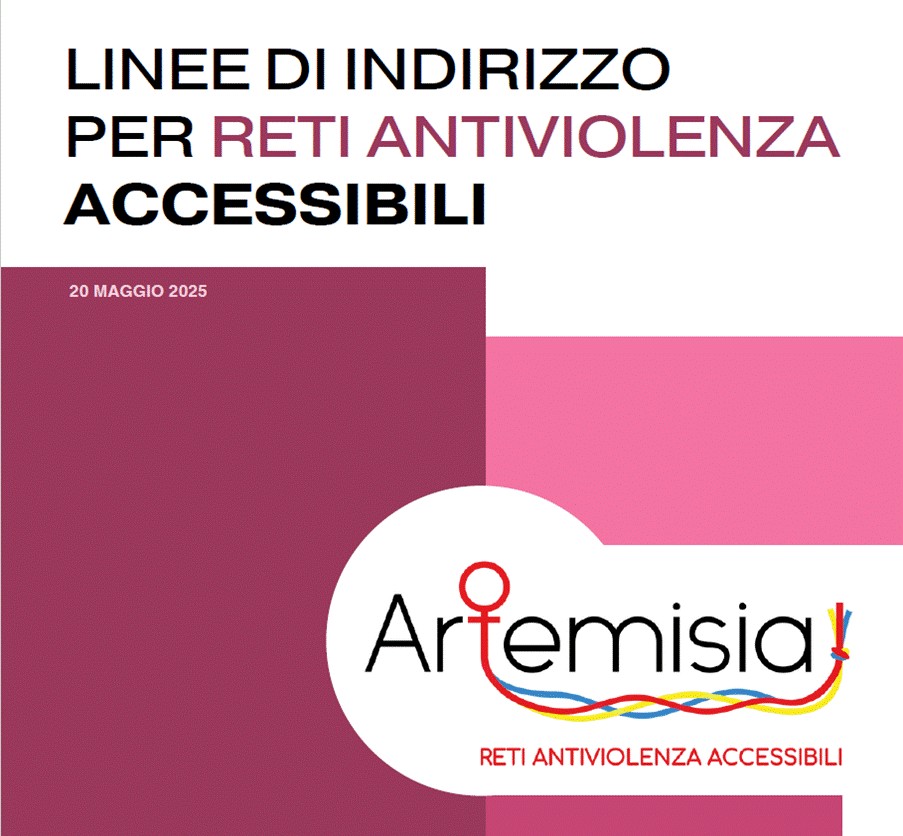“Artemisia” Project: Presentation of Results and New “Guidelines” to Tackle Violence Against Women and Girls with Disabilities

During the conference “Nessuna esclusa” (“No One Excluded”), held in Milan on 20 May, the outcomes of the Artemisia Project were presented – an acronym for “Attraverso Reti TErritoriali eMersione di SItuAzioni di violenza” (“Through Territorial Networks and the Emergence of Situations of Violence”). This initiative was promoted by Fondazione Somaschi (lead partner), together with the ASPHI Foundation and the Centro per la Famiglia Cardinal Carlo Maria Martini, in collaboration with LEDHA (the League for the Rights of Persons with Disabilities, which represents the Lombardy branch of FISH – the Italian Federation for the Rights of Persons with Disabilities and Their Families) and CEAS (Centro Ambrosiano di Solidarietà).
The project spanned three years of committed work, involving extensive training and awareness-raising activities aimed at addressing gender-based violence against women and girls with disabilities and supporting access to protection and services. Fondazione Somaschi also adapted a women's shelter to accommodate women with physical, sensory, and cognitive disabilities.
As LEDHA explains, “Violence against girls and women with disabilities remains largely hidden and difficult to expose: in some cases, because the victims themselves are unaware that they are experiencing violence; in others, because they are physically and functionally dependent on the very person who is abusing them. Furthermore, their accounts may be dismissed or not believed when they seek help. For these reasons, the first step must be to train staff at anti-violence centres and professionals working with persons with disabilities to identify the warning signs. The training activities implemented through the Artemisia Project have already yielded significant results: between 2023 and 2024, there was a marked increase (+43%) in the number of women with disabilities who sought help from anti-violence centres in Milan and surrounding areas, managed by the organisations involved in the project.”
The work carried out over the three-year period has culminated in a set of dedicated Guidelines, now available to all organisations working in this field. This document offers practical information for making physical spaces accessible and inclusive, and for ensuring that information is equally accessible. Examples include the production of Easy to Read materials or the development of websites accessible to persons with sensory impairments. As part of the project, analogue communication boards (featuring drawings and images) were created and subsequently integrated into digital communication tools used on tablets by support workers. The Guidelines also include a self-assessment questionnaire to be used by individual anti-violence centre staff, enabling them to evaluate the accessibility of their premises by assessing the presence or absence of architectural barriers, internal signage, and accessible toilets.
“Addressing such a complex issue as the emergence of violence against women with disabilities,” states Chiara Sainaghi of Fondazione Somaschi, “has required multifaceted efforts – from staff training to overcoming environmental barriers still present in the anti-violence network. The Artemisia experience has demonstrated that our services can be made accessible not only in physical terms, but also in relation to information and communication. We hope that other organisations – in Lombardy and beyond – will follow a similar path, fostering closer cooperation across skills and services in support of all women. No one excluded.”

